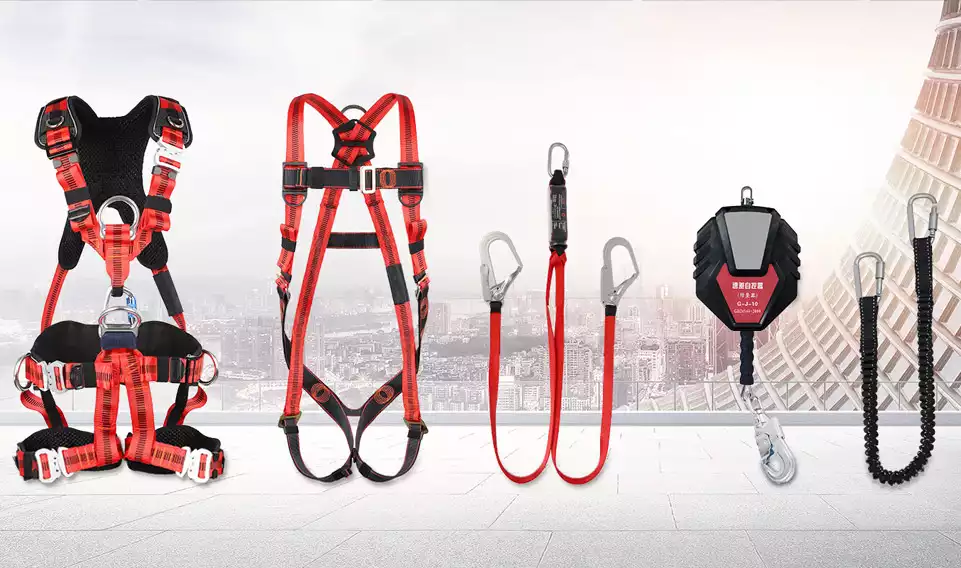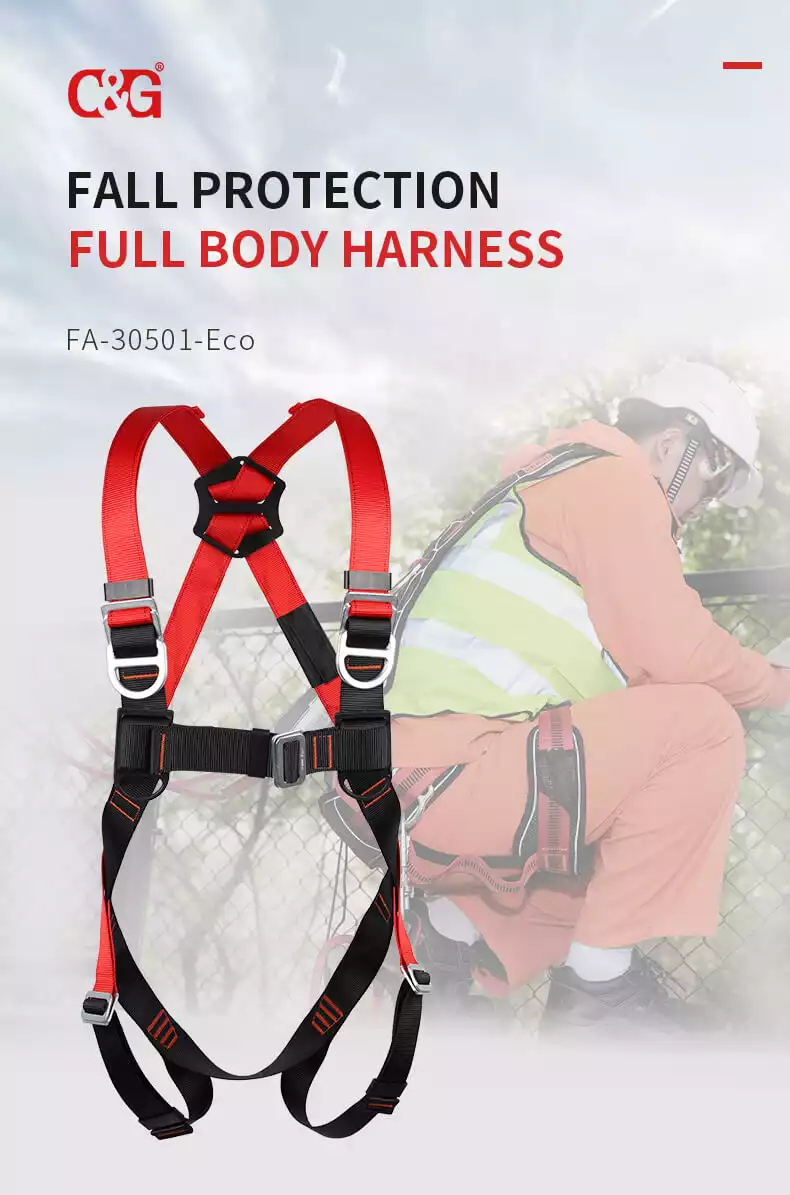
Full Body Harness: The Ultimate Safety Gear for High Altitude Work
Full body harness is an essential safety gear for workers who need to operate at high altitude or work in dangerous environments. It is designed to distribute the weight of the wearer evenly across the body, providing maximum support and protection against falls and other hazards. In this article, we will explore the features of full body harness, compare it with other similar products, discuss the dos and don'ts of wearing it, and address some common questions and concerns.
Features of Full Body Harness
Full body harness is made of high-strength materials such as nylon, polyester, or Kevlar, which can withstand extreme forces and resist abrasion, tearing, and UV radiation. It consists of a waist belt, leg loops, shoulder straps, and a dorsal attachment point, where a lanyard or other connecting device can be attached. Some models also have additional attachment points on the chest or hips for specific applications.

Full body harness is adjustable to fit different body sizes and shapes, and can be customized with various accessories such as tool holders, pouches, and reflective strips. It is also lightweight, breathable, and comfortable to wear for long periods of time, thanks to its ergonomic design and padded components.
Advantages and Disadvantages of Full Body Harness
Compared to other fall protection devices such as safety belts, lanyards, and lifelines, full body harness has several advantages. First, it provides full body coverage and support, reducing the risk of injury to the spine, pelvis, and internal organs. Second, it allows the worker to move freely and perform tasks with both hands, without compromising safety. Third, it is easy to inspect and maintain, and can last for several years with proper care.
However, full body harness also has some disadvantages. It can be bulky and cumbersome, especially when worn over bulky clothing or equipment. It can also restrict the range of motion and cause discomfort or fatigue if not adjusted properly. Moreover, it may not be suitable for certain tasks or environments, such as confined spaces, hot or humid conditions, or areas with sharp or abrasive surfaces.
Wearing Full Body Harness: Tips and Precautions
To ensure the maximum effectiveness and safety of full body harness, it is important to follow some basic guidelines and precautions. First, always inspect the harness and the connecting devices before each use, and replace any worn or damaged parts. Second, choose the right size and model for your body and the task at hand, and adjust it according to the manufacturer's instructions. Third, wear appropriate clothing and footwear that do not interfere with the harness or create additional hazards. Fourth, use a suitable anchor point that can withstand the anticipated load and is properly positioned and secured. Fifth, avoid sharp edges, heat sources, or chemicals that can damage the harness or the ropes.
Common Questions and Concerns about Full Body Harness
Some of the common questions and concerns about full body harness include the following:
- How long can a full body harness last? It depends on the frequency and intensity of use, as well as the storage and maintenance conditions. Generally, a harness can last for 3-5 years if used and cared for properly.
- Can a full body harness be reused after a fall? No, it should be replaced immediately after any fall or impact, even if there is no visible damage.
- Can a full body harness be used for rescue purposes? Yes, some models are designed specifically for rescue operations, with additional features such as padding, lifting straps, and reflective strips.
- Can a full body harness be used for children or pets? No, it should only be used by trained and authorized personnel who are familiar with its proper use and limitations.
Full body harness is a crucial safety gear for workers who operate at high altitude or work in hazardous environments. It provides full body coverage, support, and mobility, and can prevent serious injuries or fatalities from falls or other hazards. However, it requires proper selection, adjustment, inspection, and maintenance to ensure its effectiveness and reliability. By following the tips and precautions outlined in this article, you can use full body harness safely and confidently, and enjoy the peace of mind that comes with knowing you are well protected.
Tags: fullbodyharness, fullbodyharnesses, fullbodysafetyharnes, bodyharness













